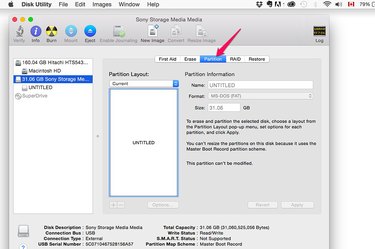

- #How to format my hard drive as mac os extended how to
- #How to format my hard drive as mac os extended password

Mac OS Extended (Journaled): Choose this option if you don't need an encrypted or case-sensitive format. For this option, “VIDEO” and “video” are two different folders.ĪPFS (Case-sensitive, Encrypted): Use this option for higher security and case-sensitive files and folders.įor Mac computers using macOS 10.12 or earlier: Keep it ticked if you don't need an encrypted or case-sensitive format.ĪPFS (Encrypted): For extra security, you can choose this option.ĪPFS (Case-sensitive): Select this one if you are used to case-sensitive file systems. Check the following list to see file system options.įor Mac computers using macOS 10.13 or later:ĪPFS: This is the default file system. The file system options vary in different operating systems. Click the pop-up menu next to Format to select a file system. When the dialog box pops up, you can enter a name for the startup drive or keep the default name: Macintosh HD. Note: Do not delete or erase the disk image called macOS Base System that contains essential information for your Mac to run smoothly. Then select the startup drive - Macintosh HD, click Erase at the top-right menu bar.

If you don't delete Macintosh HD - Data, the reinstallation will create another volume named Macintosh HD - Data - Data and you will encounter errors of different kind. If there are other internal voumes, delete them too. In that case, you need to delete Macintosh HD - Data first by clicking the delete volume button (-). On macOS Catalina and later, the Mac hard drive has two volumes, sometimes under an APFS container, which are the startup disk - Macintosh HD where operating system resides and Macintosh HD - Data where the user data is stored. The startup drive is usually named Macintosh HD or Home HD, or a custom name. All the mounted drives are listed in the left sidebar. Step 3: Select the startup disk in Disk UtilityĬlick View > See All Devices. Select Disk Utility from the macOS Utility window and click Continue.
#How to format my hard drive as mac os extended password
You'll be asked to select a user you know the password for, choose the one you know and enter your password. When the Utilities window pops up, the startup is then finished. Note that the way to boot into macOS Recovery mode on M1 Macs differs from Intel-based Macs. To format the startup disk, you have to boot your Mac into Mac Recovery mode first because you can't format the drive when it's in use. Step 1: Boot your Mac into macOS Recovery mode Step 3: Select the startup disk in Disk Utility.Step 1: Boot your Mac into macOS Recovery mode.The position of buttons and background color may slightly differ in different operating systems, but the overall process remains the same. Make sure you have a backup to crucial files.
#How to format my hard drive as mac os extended how to
FAQ about how to format startup disk on MacĮrasing the Mac startup disk will cause all data stored on it permanently wiped out. Why won't my Mac let me erase the hard drive? Step 3: Select the startup disk in Disk Utility This post explains how to format the Mac startup disk with step-by-step guides. Sometimes, you fail to reinstall macOS or want a clean reinstallation, then you will need to format the startup disk.


 0 kommentar(er)
0 kommentar(er)
